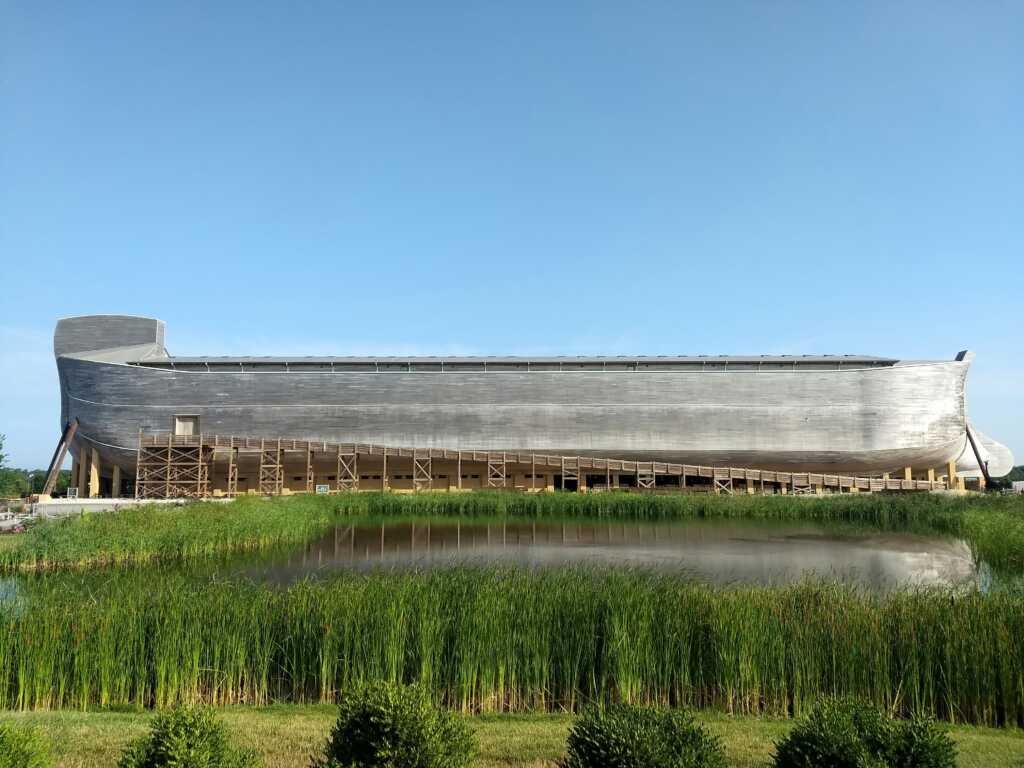An independent researcher who has devoted his time to exploring a location near Mount Ararat that is believed by some to be the remains of Noah’s ark is speaking out.
Listen to the latest episode of “Quick Start” 👇
Andrew Jones, who runs Noah’s Ark Scans, a group he described as “a loose organization of individuals interested in pursuing scientific work and promoting [the ark site],” said he became interested in the Genesis flood story when he was a child.
Years later, in college, this intrigue expanded when he visited Turkey and saw the location for himself.
“I’ve been going back and forth ever since,” he said.
Jones said Noah’s Ark Scans works with scientists to explore the Mount Ararat site in an effort to take steps toward discerning whether it truly is the resting place of the massive biblical vessel.
“This [time] last year, we had an Australian soil scientist come out there and he suggested a soil test that we could do because we noticed, for example, that the grass growing in this boat formation was a different color than right outside the boat object,” he said. “So [he] and the local Turkish geologists designed a test, and they got the samples, and we got some … really interesting results.”
One of the central questions surrounding the ark site is why, if it’s believed to potentially hold these remains, it has taken so long to do discernible and definitive research.
Jones said a series of issues have held up that process.
“We are just as interested as anyone else in either proving or disproving what this site is,” he said. “There’s many factors involved — some are politics, so this is Eastern Turkey. You do have issues out there that could affect doing scientific work. Then, you have religious issues.”
From Christian claims to Islamic ones, there’s a “competition” of sorts surrounding the story. Mixing that in with a lack of interest in some quarters, among other factors, has created barriers.
“If you’re going to pursue a scientific investigation to this site you have to work with a local university, which means you need to find a university and professors who are willing to put their career on the line looking for Noah’s ark, which, even for Islamic scholars, that could be a problem,” Jones said. “People think you’re crazy-looking for something like this. And so, yeah, it’s very difficult.”
But Jones said he and others continue pushing on, working with local authorities and international partners to analyze and explore the area where they believe the vessel might be located.
As for the location, Jones said the Bible gives a “very brief description” in Genesis. In fact, Genesis 8:4 reads (NIV): “And on the seventeenth day of the seventh month the ark came to rest on the mountains of Ararat.”
Moses’ description, Jones said, isn’t GPS-specific.
“That’d be like me saying today, ‘Noah ark landed in the mountains of Colorado or the mountains of Canada,'” he said. “It is a general area.”
The site where Jones and others are exploring is in this area, he said. The shape of the site reportedly first caught the attention of a Turkish military official decades ago.
“In a remote corner of Turkey, a unique geological formation, unearthed on September 11, 1959, by Turkish Army Captain Ilhan Durupinar, is raising eyebrows and piquing the interest of biblical scholars and geologists alike,” Noah’s Ark Scans writes in a description. “This boat-shaped geological curiosity, commonly referred to as the Durupinar formation, is considered by some to be the final resting place of Noah’s Ark.”
At the time, the discovery made a media splash and people immediately began heading out to see for themselves. Eventually, though, Jones said the location was almost “forgotten about” until an American named Ronald Wyatt started exploring and promoting it in the 1980s and 1990s before his death.
Jones and others have since picked up that mantle, working with experts to collect evidence. He explained the specific components that lead some to believe this is a good contender for the location of the ark.
“Number one, we have a ship shape,” Jones said, noting that the biblical size also lines up. “We have the shape, we have the location matching, we have the length matching exactly in the Bible.”
He continued, “Right now, the only tests that we can do are non-destructive-type of tests, like geophysical scans. … GPR, which is … ground-penetrating radar, ERT, which uses electricity, and measures a resistive nature [of] what’s below the ground.”
This data is used to create models and to explore what might be inside the soil. So far, he and other researchers believe there are “angular structures” underground and even a “central tunnel” inside the structure that seems to point to something more than a mere mound of dirt.
Eventually, they hope to excavate when the conditions and parameters allow. Right now, using non-destructive means is important. Jones hopes to continue collecting samples and forging on with a plan to better discern what might be underneath the area.
“We’re hoping that before any excavations are even considered that we could cord drill the site at random locations and at some of these spots that the radar is showing to be like [an] angular structure that … possibly won’t be considered natural, so maybe manmade-like walls,” he said. “And some of these voids, this tunnel is going down the middle about four meters down.”
These samples, Jones said, would give more information and context to better understand what’s happening inside the site. He’s also hoping to do additional soil testing.
Ultimately, he believes, based on the size, shape, and data that this “has to be the remains” of Noah’s ark. He doesn’t expect it will be fully preserved due to the age and time passed, but he sees the site as the “best candidate” at the current time.
Those interested can follow the Noah’s Ark Scans journey here.
As the number of voices facing big-tech censorship continues to grow, please sign up for Faithwire’s daily newsletter and download the CBN News app, developed by our parent company, to stay up-to-date with the latest news from a distinctly Christian perspective.



